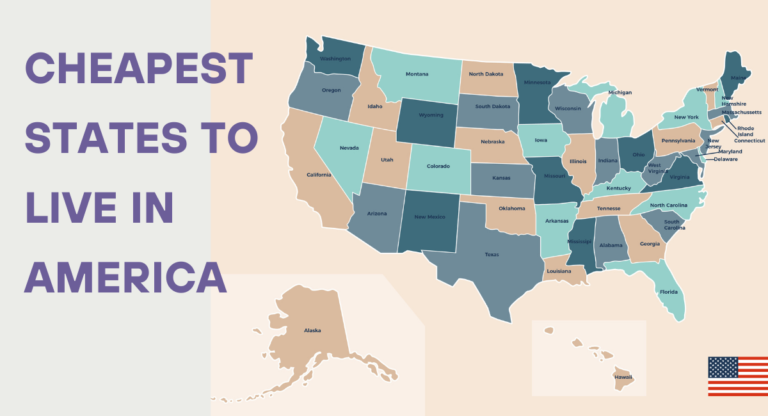Understanding the Richest Countries in the World in 2024
The world’s richest countries are distinguished by their impressive GDP figures and high standards of living. These nations have developed diverse and robust economies, supported by sectors like finance, technology, natural resources, and tourism. They benefit from political stability, advanced infrastructure, and strategic economic policies that attract investments and foster growth.
Luxembourg, Macao SAR, Ireland, Singapore, Qatar, United Arab Emirates, Switzerland, San Marino, United States, and Norway are known as the Richest Countries in the World.
So, let’s explore the Most Expensive and Richest Countries in the World!
List of the Richest Countries in the World
The following is the list of the Richest Countries in the World.
- Luxembourg
- Macao SAR
- Ireland
- Singapore
- Qatar
- United Arab Emirates
- Switzerland
- San Marino
- United States
- Norway
1. Luxembourg – GDP 85.76 billion $
Luxembourg, a small landlocked country in Western Europe, is known for its wealth and high standard of living. It shares borders with Belgium, France, and Germany. Despite its size, Luxembourg boasts one of the highest GDP per capita in the world, often ranking among the top in various global economic indicators.
Luxembourg is a global financial hub, home to numerous banks, investment funds, and insurance companies. The country’s favorable tax laws and regulations attract multinational corporations and wealthy individuals, making the financial services sector a significant contributor to its economy. Luxembourg is also the second-largest investment fund center in the world, after the United States.
The country benefits from a stable political environment and strong governance. While the financial sector is dominant, Luxembourg has a diversified economy that includes steel production, technology, and logistics. The country’s strategic location in Europe makes it a vital logistics hub, with excellent infrastructure connecting it to major European markets.
As a founding member of the European Union, Luxembourg benefits from access to the single European market and various EU funding programs. Its central role in the EU also enhances its political and economic influence.
2. Macao SAR – GDP 55 billion $
Macao Special Administrative Region (SAR) is a small, highly prosperous region on the southern coast of China, near Hong Kong. Known for its vibrant casino industry and rich cultural heritage, Macao is one of the world’s wealthiest territories in terms of GDP per capita.
Macao is famously dubbed the “Las Vegas of Asia,” owing to its booming gaming industry. The region is the only place in China where casino gambling is legal, attracting millions of tourists annually. Gaming revenue is the backbone of Macao’s economy, contributing over 50% of its GDP and providing a significant source of employment.
Macao boasts a rich blend of Portuguese and Chinese cultures, reflected in its architecture, cuisine, and festivals. UNESCO World Heritage sites, such as the Historic Centre of Macao, draw cultural tourists, adding to the region’s economic vibrancy.
Macao’s government has implemented favorable economic policies, including low taxes and a free-market environment. These policies attract foreign investment and support local businesses, further stimulating economic growth.
Macao’s strategic location on the Pearl River Delta places it at the heart of one of the world’s most dynamic economic regions. Proximity to mainland China, particularly the Guangdong province, facilitates trade, investment, and tourism.
You might also like: 10 Most Educated Countries In The World
3. Ireland – GDP 516 billion $
Ireland, an island nation in the North Atlantic, is known for its rich cultural heritage, lush landscapes, and robust economy. Ireland has successfully attracted significant foreign direct investment, particularly from multinational corporations. Its low corporate tax rate, currently at 12.5%, is one of the most competitive in the world.
It has drawn companies from various sectors, including technology, pharmaceuticals, and finance. Big companies like Apple, Google, and Facebook have established substantial operations in Ireland, contributing to economic growth and job creation.
Ireland’s workforce is highly educated and skilled, with a strong emphasis on higher education and vocational training. The country invests heavily in research and development, fostering innovation and technological advancement. Government initiatives and partnerships between academia and industry support a vibrant ecosystem of startups and established firms.
As a member of the European Union, Ireland benefits from access to the single European market, facilitating trade and investment. EU funding programs also support infrastructure, education, and development projects, further enhancing economic growth.
4. Singapore – GDP 737 billion $
Singapore, a small but prosperous city-state in Southeast Asia, is renowned for its impressive economic growth and high standard of living. Located at the southern tip of the Malay Peninsula, Singapore is a global financial hub and one of the busiest ports in the world.
Singapore’s strategic location along major shipping routes has made it a key global trade and logistics hub. Its world-class port facilities and efficient customs processes facilitate high volumes of international trade.
The country consistently ranks high in global ease of doing business indices. These conditions attract multinational corporations, which establish regional headquarters and operations in Singapore, driving economic growth and job creation.
The financial services sector is a cornerstone of Singapore’s economy. The country is a leading global financial center, hosting numerous banks, investment firms, and insurance companies.
While trade and finance are dominant, Singapore has diversified its economy to include sectors like biotechnology, information technology, tourism, and healthcare. This diversification reduces vulnerability to economic shocks and supports sustainable growth.
You might also like: Most Visited Countries in Asia
5. Qatar – GDP 244.69 billion $
Qatar, a small but affluent country in the Middle East, is located on the northeastern coast of the Arabian Peninsula. It shares a land border with Saudi Arabia and is surrounded by the Persian Gulf. The capital city, Doha, is a modern metropolis known for its futuristic skyscrapers and cultural landmarks.
Qatar’s wealth is primarily driven by its vast reserves of oil and natural gas. The country holds the third-largest natural gas reserves in the world and is one of the leading exporters of liquefied natural gas (LNG). Revenue from hydrocarbons accounts for a significant portion of Qatar’s GDP, government revenue, and export earnings.
The Qatar Investment Authority (QIA), the country’s sovereign wealth fund, plays a crucial role in managing and diversifying Qatar’s wealth. The QIA invests in a wide range of assets globally, including real estate, equities, and infrastructure, providing a steady stream of income and helping to secure the country’s financial future.
Projects such as Hamad International Airport, the Doha Metro, and the new port have bolstered Qatar’s position as a regional hub for transport and logistics.
To reduce dependence on oil and gas, Qatar has been actively pursuing economic diversification. The Qatar National Vision 2030 outlines plans to develop sectors such as finance, tourism, education, and healthcare.
6. United Arab Emirates – GDP 527.80 billion $
The United Arab Emirates (UAE) is a federation of seven emirates located on the southeastern coast of the Arabian Peninsula, bordering Saudi Arabia and Oman. The capital city is Abu Dhabi, while Dubai is its largest and most populous city. The UAE is known for its modern architecture, luxury shopping, and vibrant economy.
The UAE’s wealth is significantly driven by its vast reserves of oil and natural gas, particularly in Abu Dhabi, which holds the majority of the country’s hydrocarbon resources.
Dubai, in particular, has become a global business and tourism hub, attracting millions of visitors annually. Key sectors driving economic diversification include real estate, tourism, aviation, financial services, and technology. Initiatives like Dubai Internet City and Dubai Media City support innovation and the growth of the knowledge economy.
Massive investments in real estate and infrastructure have transformed the UAE into a modern metropolis. Iconic projects like the Burj Khalifa, Palm Jumeirah, and the Dubai Mall symbolize the country’s ambition and growth.
The Dubai International Financial Centre (DIFC) and Abu Dhabi Global Market (ADGM) attract global financial institutions, providing a platform for banking, investment, and insurance services.
Tourism is a vital component of the UAE’s diversified economy. The country is a major tourist destination, known for its luxury hotels, shopping festivals, and cultural attractions.
Also read: Safest Cities In The World
7. Switzerland – GDP 885.14 billion $
Switzerland, a landlocked country in Central Europe, is renowned for its stunning landscapes, high standard of living, and robust economy. It is bordered by Germany, France, Italy, Austria, and Liechtenstein.
Switzerland is a global financial hub, known for its banking and insurance sectors. Swiss banks, such as UBS and Credit Suisse, have a strong international presence and attract wealthy clients due to the country’s long-standing reputation for stability, privacy, and security.
The Swiss economy benefits from a highly developed industrial sector, particularly in precision manufacturing, pharmaceuticals, chemicals, and machinery. Swiss companies like Nestlé, Novartis, and Roche are global leaders in their respective fields.
The country invests heavily in research and development, supported by world-class universities such as ETH Zurich and the University of Zurich.
The Swiss franc (CHF) is considered one of the world’s most stable and reliable currencies. Switzerland’s prudent monetary policy, managed by the Swiss National Bank, ensures low inflation and economic stability, making it an attractive destination for investment.
8. San Marino – GDP 2.034 billion $
San Marino, officially known as the Republic of San Marino, is a small landlocked country in Southern Europe, surrounded by Italy. It is one of the world’s smallest countries, covering just 61 square kilometers.
Tourism is a major contributor to San Marino’s economy. The country attracts visitors with its well-preserved medieval architecture, historic sites, and scenic landscapes. Key attractions include the Three Towers of San Marino, the Palazzo Pubblico, and the Basilica di San Marino. The country’s status as one of the oldest republics in the world and its UNESCO World Heritage status also enhance its appeal to tourists.
San Marino has a small but diverse industrial sector, including the production of ceramics, textiles, electronics, and furniture. The country’s manufacturing industry benefits from high-quality craftsmanship and innovation, producing goods that are competitive in international markets.
San Marino has a favorable tax regime with low personal and corporate tax rates, attracting businesses and individuals seeking a tax-efficient jurisdiction.
Agriculture, though limited by the country’s small size, contributes to San Marino’s economy through the production of wine, olive oil, and other high-quality food products. These products are often sold locally and exported, adding to the country’s economic diversity.
9. United States – GDP 28.78 trillion $
The United States is a vast and diverse country located in North America, bordered by Canada to the north, Mexico to the south, the Atlantic Ocean to the east, and the Pacific Ocean to the west.
The United States has the largest economy in the world, characterized by a diverse mix of industries including technology, finance, healthcare, manufacturing, and agriculture. This diversity provides economic resilience and drives innovation and productivity. Major cities like New York, Los Angeles, Chicago, and Houston are economic powerhouses contributing significantly to the national GDP.
The U.S. is a global leader in technology and innovation. Silicon Valley in California is home to some of the world’s largest and most influential tech companies, such as Apple, Google, and Facebook. The country’s emphasis on research and development, supported by leading universities and research institutions, fuels technological advancements and economic growth.
The U.S. has a highly developed financial sector, with New York City being one of the world’s major economic centers. The presence of major stock exchanges, such as the New York Stock Exchange (NYSE) and NASDAQ, along with numerous banks and investment firms, facilitates capital flow and investment.
The U.S. maintains a strong military presence and plays a pivotal role in global politics. Its political stability and influence contribute to a favorable business environment and economic security.
10. Norway – GDP 485.51 billion $
Norway, located in Northern Europe on the western part of the Scandinavian Peninsula, is known for its stunning fjords, high standard of living, and strong economy. It is one of the richest countries in Europe.
Norway is one of the world’s largest exporters of oil and natural gas. The discovery of offshore oil in the North Sea in the 1960s transformed Norway’s economy, providing significant revenue through state-owned oil company Equinor (formerly Statoil). Revenue from the petroleum sector has been managed prudently through the Government Pension Fund Global (often referred to as the Norwegian Oil Fund), one of the world’s largest sovereign wealth funds.
Norway invests heavily in research and development, fostering innovation in sectors such as marine technology, renewable energy, and biotechnology. It has a thriving fishing industry, particularly in salmon and other seafood exports. The maritime sector, including shipping and offshore industries, also contributes significantly to the economy.
Norwegian companies like Telenor and DNV GL are prominent in telecommunications and maritime classification, respectively.
Norway’s natural beauty, including fjords, mountains, and the Northern Lights, attracts tourists from around the world. Cultural attractions such as the Viking heritage and contemporary Scandinavian design also contribute to tourism revenue.
Conclusion
In conclusion, the Richest Countries in the World serve as models of economic success, each with unique paths to affluence. Their stories testify to the power of innovation, strategic governance, and resource management in achieving and sustaining wealth. By studying their successes and challenges, we can gain valuable insights into creating a more prosperous and equitable global economy.
FAQs
Is PPP more important than GDP?
The importance of PPP (Purchasing Power Parity) versus GDP (Gross Domestic Product) depends on the context in which these metrics are used. Both have their significance and are used to measure different aspects of an economy.
Which country is the poorest in the world right now?
As of 2024, South Sudan is considered the poorest country in the world based on GDP per capita (PPP), which is approximately $493.
What country has negative growth?
As of the latest available data, several countries have experienced negative economic growth, also known as a recession.
- Venezuela: Venezuela has experienced severe economic contraction due to political instability, hyperinflation, and declining oil revenues.
- Lebanon: Lebanon has faced significant economic challenges, including a financial crisis, political instability, and the impact of the Beirut port explosion.
- Argentina: Argentina has struggled with economic instability, high inflation, and debt issues, leading to periods of negative growth.
- Sri Lanka: Sri Lanka has faced economic difficulties, including high debt levels and a balance of payments crisis, leading to negative growth.
- Ukraine: The ongoing conflict with Russia has severely impacted Ukraine’s economy, leading to negative growth.
Which country’s population is decreasing?
Several countries around the world are experiencing population decline due to factors such as low birth rates, high death rates, and emigration. Here are some notable examples:
- Japan: Japan has been facing a declining population due to low birth rates and an aging population.
- Italy: Italy’s population is decreasing because of low fertility rates and an aging population.
- Germany: While Germany has seen some population growth due to immigration, its native population is declining due to low birth rates.

I’m Sophia Jones, an adventurer at heart from New York City, USA. I live for travel and exploration, always eager to discover new places, meet fascinating people, and try out diverse cuisines. Over the past few years, I’ve traveled to numerous countries, immersing myself in different cultures and creating unforgettable memories.






